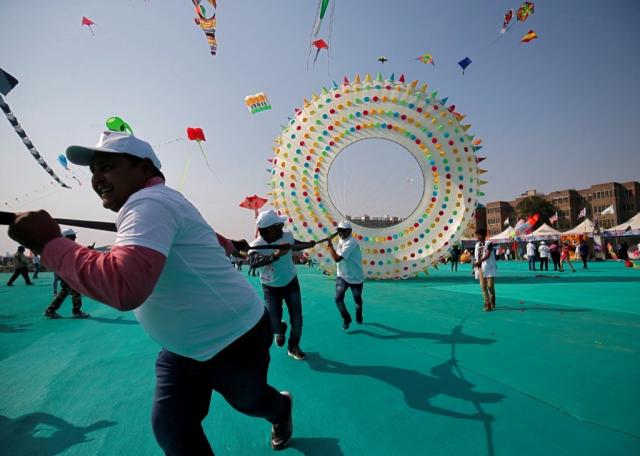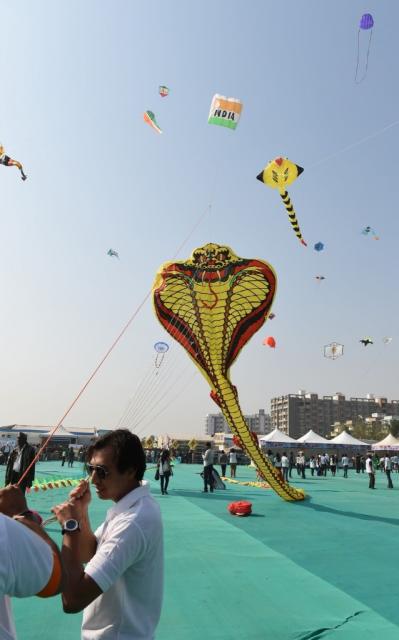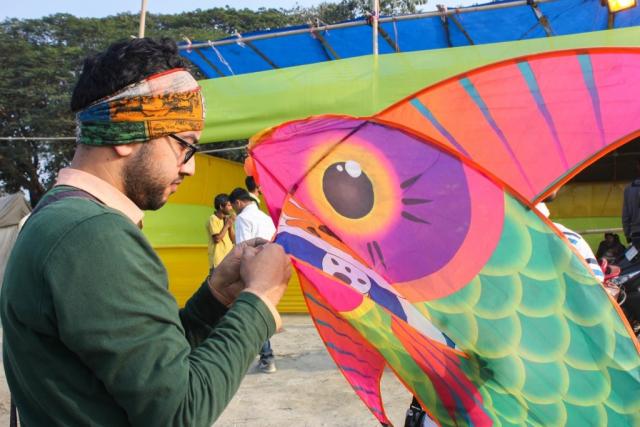Search the Community
Showing results for tags 'india'.
-
I have mixed feeling when reading some of the recent news about this once a luxurious brand. People of my era would probably remember that in the 70s to 80s, where Audi and BMW have yet to establish a strong footing in the premium segment and Lexus was still in the womb of Toyota, Jaguar stand shoulder to shoulder with Mercedes, if not taller. However, things took a downturn with more competition (from Audi, BMW, Volvo and Lexus) and the mismanagement of the marque by its parent company (and the UK government), which results in the sales of Jaguar to Ford in 1990 and subsequently to Tata in 2008. The merger with Land Rover to form JLR group in 2013 sounds like a brilliant plan to revive the brand, but not in the actual. Fast forward to 2024, with the push by EU to phase out gasoline model by 2040, it added more uncertainty to most automotive manufacturers. Jaguar too has to decide which path to take since it has finite funding, and they have place their bet on EVs about 2 years back, with the sudden halt in the development of a new XJ (which has already been spotted in production ready outfits). That is not the only changes, as Jaguar also plan to go upmarket to take on Bentley, Aston Martin and such, which is a VERY bold move. Will they succeed or gone down in history? I wish them all the best! Jaguar To Kill All Gas Cars In 2024 To Embrace EVs Jaguar is taking a different approach in its plan of producing nothing but battery-electric vehicles. Whereas most other brands are slowly making the transition over the coming years if not decade, Jaguar has confirmed it will cease production of its gas-powered models before introducing a new lineup comprised exclusively of BEVs. Jaguar has stopped building the XE, XF and F-Type; I-Pace and E-Pace to stop in Dec Jaguar has confirmed production on five model lines will end in 2024, leaving the F-Pace as the last car it’ll build before it begins its electric era from 2025. A company spokesperson confirmed production of the XE, XF and F-Type sportscar had already finished, while the E-Pace small SUV and game-changing I-Pace EV – both built in Austria – will be stopped in December 2024. Jaguar, a British Car Brand, Has Stopped Selling New Cars in the UK Announced nearly four years ago, Jaguar Land Rover’s “Reimagine” global strategy had one hugely important bullet point: “Reimagination of Jaguar as an all‑electric luxury brand from 2025 to realize its unique potential.” 2025 is right around the corner, and while new EVs have not been unveiled yet, the end is nigh for cars with combustion engines. In fact, Jaguar has stopped selling new vehicles with conventional powertrains in its home market. That’s right—you can’t buy a brand-new Jaguar in the UK anymore. The E-Pace, XE, XF, and F-Type had already been axed, and now the F-Pace has also bowed out. Autocar received a statement from JLR: "From November 2024, new Jaguar sales will come to an end ahead. We have now ceased allocation of our current generation of Jaguar vehicles.” Owned by Tata Motors since 2008, Jaguar will be pushed upmarket. It won’t rival the likes of BMW, Mercedes-Benz, and Audi anymore. Instead, it’ll go up against the likes of Bentley and Aston Martin. The first EV after the brand’s reinvention is expected to be a Porsche Taycan competitor, with a Bentayga-fighting SUV to land in 2026. Both will be underpinned by the dedicated Jaguar Electrified Architecture, which will also serve as the foundation for a big sedan due later this decade.
-
If there is ever a Guinness record for stupidest things on earth, this one shall make it to the top 10, at least. I wonder how the pigeon is going to respond when the charge shit sheet is read out to him, and what will be the penalty for spying. "If you are found guilty for spying under section 123 of SMLJ ACT, you may face a penalty of up to RS100,000 fine, jail for up to 10 years (err pigeon life span is how long ah?) or be BBQ (death penalty)" Hahahaha Pigeon Suspected Of Being Chinese Spy By Police In India, Detained For 8 Months Source: https://mustsharenews.com/pigeon-spy-india/ A pigeon was suspected by the Indian police of being a Chinese spy, and detained for as long as eight months. The bird was finally released after an animal welfare group reached out to the police. It had aroused suspicion due to an illegible “message” on its wings. It started in May 2023, when the police in Mumbai found a bird that had what was thought to carry a “message” on its wings. Though the “words” were illegible, they seemed to be in a “Chinese-like script”, reported The Times Of India (TOI). It also had two rings tied to its leg, which made it more suspicious. The pigeon was sent to the Bai Sakarbai Dinshaw Petit Hospital for Animals (BSDPHA) to be medically examined as part of police investigations. It ended up staying there for an “astonishing” eight months, PETA India said. Recently, the hospital asked the police whether they could release the bird, which was healthy and taking up a cage for no good reason. However, no appropriate response was received. PETA India reaches out to police PETA India thus reached out to the police, requesting them to allow BSDPHA to release the pigeon. The organisation said that a 2011 court judgement stated that birds have a “fundamental right to live free in the open sky” and should not be caged. Another court order in 2015 also disallowed the caging of birds for business or other purposes. Initially, the pigeon was charged with spying. However, investigations revealed that the bird had taken part in racing events in Taiwan and accidentally flown to India, according to TOI. The charge was dropped and the police eventually granted the bird’s release. It was subsequently released on the hospital premises on Wednesday (31 Jan).
- 78 replies
-
- 16
-
.png)
-

-
Yet another one... https://mothership.sg/2021/07/india-school-copy-singapore-sports-school-logo/ The logo of a school in Nagpur, India's state of Maharastra, known as Gaikwad Patil International School (GPIS) looks exactly like Singapore Sports School's (SSS) logo. Principal claims school is now closed and there's nothing further to discuss In reponse to Mothership's queries, SSS said that they had reached out to the principal of GPIS about the matter, as well as the school itself through the "Contact Us" page on their website. The principal then replied SSS, by sharing that she had left the job and that the school "is also shut now". As such, the issue of the two schools having the same logo "does not need any further discussion." SSS added that they interpreted the principal's comments to mean that GPIS is now closed. In addition, SSS asked the principal if she was aware as to whether the school's owner intends to take down the website, since the school is now closed, adding that it would otherwise be misleading having the website remain live. SSS also requested that the principal refers them to the owner of the school, if she was not yet aware. However, on these matters, SSS added that it has not received any further response from the principal since then. The schools' website appears to have since become inaccessible. Principal has assumed new job at DPIS which is located at the same address as GPIS Meanwhile, the principal appears to have assumed a new job at Delhi Public International School (DPIS), which appears to be at the same address as GPIS, according to her LinkedIn profile. Her last post on GPIS was about two months ago, in which she put up a poster stating that applications for GPIS were open. GPIS also appears to have been promoted by DPIS before, with a video by the latter in 2019 advertising the former's facilities. Who designed the SSS logo? According to SSS, it was designed by Ukulele, a commercial brand consultancy in 2003. The trademark was first registered on Sep. 16, 2003, with the school taking in its first cohort of student-athletes in 2004.
-
https://www.independent.co.uk/space/chandrayaan-3-budget-india-interstellar-b2399203.html Some houses cost less than Indian space agency spent on getting to the Moon India has successfully landed on the Moon – for less than the cost of the film Interstellar. The Indian space agency announced on Wednesday that it had completed a “soft landing” on the lunar surface, near its southern pole. It becomes the first ever to land there, and just the fourth country to successfully send a mission to the Moon at all. And it did so on a very restrictive budget. The Chandrayaan-3 cost was sent to the Moon at a cost of about 6.15 billion rupees, or $75 million, according to Reuters. That is less than the cost of most blockbuster space films. Gravity cost $100 million, The Martian cost $108 million – and it was less than half the cost of Interstellar, which was filmed on a budget of $165 million. It even costs less than some houses. The UK’s most expensive house, for instance, went on sale at £200 million, or nearly three-and-a-half missions to the Moon. The budget is even less than India allocated to Chandrayaan-2, the previous attempt to land on the Moon in 2019, which ended in failure when the lander crashed. That cost around 8 billion rupees, or about 30 per cent more than the latest successful mission, though engineers have made clear that many of the learnings from that earlier launch had been integrated into the latest one. India has looked to build a reputation for cost-effective but still successful missions to space. It comes as the country encourages investment in the private space industry and businesses focused on satellites. The price of the whole Indian mission is similar to that charged by SpaceX for one Falcon 9 launch. That is charged at $67 million, according to its website.
-
Enjoy reading- A GROUP of intrepid Singapore motorists are showing that you do not need airplanes to travel the world - just four wheels, a gung-ho spirit and cruise control. Singapore permanent resident Daniel Ma from Malaysia and his wife, Singaporean Hew Shiau Wei, drove from India to South Africa in their off-peak Singapore-registered Hyundai Matrix car, a journey that took more than nine months. That was a mere jaunt in the big scheme of things, though. The adventurous pair, both 29, started in August last year and recently completed an extreme road trip which covered 43,500km and 24 countries. Their India to South Africa trip was just one leg of it. During their odyssey, they encounted huge potholes in India and swindlers in Egypt, and drove alongside grazing giraffes on desert roads in Kenya. The car-crazy couple are among an increasing number of Singaporeans and residents here taking the road less travelled - well, for a driving holiday at least. The Automobile Association (AA) of Singapore, which organised a 23-day road trip from Singapore to Lijiang in China last September, said it is experiencing a jump in the popularity of road trips among their members. The motoring association regularly organises road holidays to Malaysia, with more than 400 of its members taking part last year. Its spokesman said: 'Driving holidays have become more popular as members have become more adventurous and road savvy and do not want to be constrained by a fixed itinerary.' She added that these people 'prefer to have more control over time' and 'enjoy sights and places of interest that are not ordinarily covered in normal itineraries'. http://www.asiaone.com/Motoring/Drivers/St...607-220711.html
-
Background If you were to do a search on Wikipedia, the term Quadricycle exists since 1896, when Ford called his vehicle, which ran on four bicycle tires with an engine driving the back wheels, the "Quadricycle". In modern-day France, a quadricycle is a 4-wheel car that cannot go faster than 28 mph and weighs less than 770 pounds. Latest Development The India government has approved quadricycle as a new category of vehicle to be allowed to run on Indian roads. The road transport and highways ministry has issued the final notification on the standards for quadricycle, such as its weight, emission and safety features. The passenger quadricycle will have a maximum weight of 475 kg and before being launched, it has to go through a mandatory crash test that would determine the passenger safety standards. Along with those running on conventional fuel, the government has also given approval for electric and hybrid quadricycles. “The final standards for the category have been issued. Any company that manufactures quadricycle can sell it in India. We have ensured that the safety standards for quadricycle are more stringent than the European standards,” a road transport and highways ministry official said. “All safety standards that are prescribed for other passenger four-wheelers are prescribed for quadricycle as well. The vehicle will be tested on its crash worthiness as well,” the official said. Bajaj Qute Bajaj has been the pioneer of last mile city transport. It’s auto rickshaw is an Indian icon recognized around the world. With the urban landscape changing in last few years, Bajaj has once again pioneered the transformation in the way modern India will move by introducing Qute- a smart move for solving the urban problems. Qute is a four-wheeler, yet not a car. It comes under a whole new category — the quadricycle. It is a new-age vehicle that carries the attributes of a three-wheeler as well as those of a car. It is compact, lightweight, and has a carbon footprint that is 37% lesser than the smallest car available. With a patented fuel injected Digital Tri-spark ignition engine that delivers C02 emissions of just 66gms/km & a mileage of 36kmpl, the Qute is possibly the greenest & leanest 4-wheeler anywhere in the world, and perhaps the safest too. Thanks to its restricted weight & speed of under 450 kgs & 70 kmph respectively, the Qute, unlike cars, is no threat to pedestrians, cyclists & 2-wheeler riders who represent the vast majority of casualties on our roads. The simple truth is that fast & heavy cars can kill slowly with emissions or instantaneously upon impact. Bajaj Qute, the world’s first affordable "Anti-car" quadricycle was thus designed specifically for intra-city travel that’s always green, never mean. Technical Specifications Engine: 216.6cc CNG and LPG variants available Gear: Sequential gear shift like motorcycles (5 forward + 1 reverse) Peak Power: 13.2 PS Max Speed: 70 Kmph Dimension: 2,752 mm (L) x 1,312 mm (W) x 1,652 mm (H) Wheel Base: 1,925 mm Wheel Track: 1,143 mm Turning Radius: 3.5 m
- 22 replies
-
- 7
-

-
- quadricycle
- micro car
-
(and 5 more)
Tagged with:
-
119 killed !!
- 8 replies
-
- india
- train accident
- (and 5 more)
-
https://asia.nikkei.com/Spotlight/Supply-Chain/Apple-already-building-latest-iPhone-14-in-India?utm_campaign=GL_asia_daily&utm_medium=email&utm_source=NA_newsletter&utm_content=article_link&del_type=1&pub_date=20220927123000&seq_num=11&si=44594 Apple already building latest iPhone 14 in India Move a sign South Asian country is gaining importance in supply chain Apple has started producing its newest iPhone 14 in India, within weeks of their global launch. (Source photos by Reuters and Kosaku Mimura) CHENG TING-FANG, Nikkei Asia chief tech correspondentSeptember 26, 2022 19:40 JST TAIPEI -- Apple announced it has started producing the iPhone 14 in India just three weeks after the release of the smartphone lineup, a significant win for the South Asian country as it attempts to grab a bigger piece of the global electronics supply chain. Apple said on Monday that it is "excited to be manufacturing [the] iPhone 14 in India." It is the first time that Apple has started producing its newest phones outside of China so soon after their launch. For now, only the 6.1-inch iPhone 14 model is being built in India, two people told Nikkei Asia, saying that additional models, including the iPhone 14 Plus, could follow in a matter of months. Traditionally, Apple keeps the manufacture of new iPhones entirely in China until it is confident that production of the devices is running smoothly. Only then does it begin producing the latest models in other countries, like India. Apple started assembling its budget iPhone SE in India in 2017 via a smaller iPhone assembler Wistron. Two major assemblers, Foxconn and Pegatron, later expanded production in India and helped Apple assemble some parts of the iPhone 12 and iPhone 13 models in the South Asian country. In April, Apple confirmed it had started to build iPhone 13 in India -- more than half a year after it introduced the product. Most iPhones are still built in China: in the Chinese cities of Zhengzhou and Shenzhen by Foxconn, in Shanghai by Pegatron, and in Kunshan, Jiangsu province, by Luxshare Precision Industry. Foxconn is still the biggest supplier, securing orders to build three different models of the latest range, including the iPhone 14, and is the primary source for the premium iPhone 14 Pro and 14 Pro Max models, sources briefed on the matter told Nikkei Asia. Pegatron and Luxshare mainly assemble the standard iPhone 14 and 14 Plus models, they said. Apple has started to diversify production out of China, its main production base, in recent years. It asked suppliers as early as 2018 to evaluate producing some AirPods outside of the country, with the test production of the earphones beginning in Vietnam the following year. Apple also plans to build iPads and the Apple Watch in Vietnam as it attempts to lower its dependence on the world's second-largest economy. "We see Foxconn and Pegatron are all expanding production in India," said Jeff Pu, an analyst with Haitong International Securities. "Given the rising labor costs in China and the ongoing trend of diversifying regional manufacturing, we do see a growing portion of iPhones being built in India in years to come." Additional reporting by Lauly Li.
-
Honestly, I have lost count of the number of SUV / crossover available in the Kia stable. A quick check on Kia (Korea) website, revealed the following: Telluride Mohave (Borrego) Sorento Sportage Seltos Niro Stonic Soul That seems to be a lot of SUV / crossover for company with a total of 19 distinctive models in it lineup (some are not available here through). Now, Kia has just announced another new sub-compact SUV in India, and they plan to introduce it to other market at a later stage. That's too much of SUV / crossover if you ask me, but it seems that NO auto manufacturers are immune to the "crossover virus", which started spreading since 5 - 10 years ago. Kia Sonet Kia Sonet is an all-new subcompact SUV to be produced at Kia's Anantpur facility for sale in India and also exported to international markets. Rivalling the likes of Hyundai Venue and Maruti Suzuki Vitara Brezza, Kia Sonet shares its engine and platform with the sister company Venue subcompact SUV and will be the second car in the country to feature clutchless transmission. Upfront, the Kia Sonet gets the company’s signature ‘Tiger Nose’ with all-LED headlamps. The side profile looks quite impressive too and the car has a decent amount of lines and creases running across the body length, further escalating its sporty appeal. Now, coming to the interiors of the Kia Sonet, the SUV gets a 10.25-inch touchscreen infotainment system with as many as 55 UVO connected features as well. Moreover, you also get a digital instrument cluster and the same will come as standard on higher-spec variants. Apart from these, Kia Sonet comes with a three-spoke steering wheel with integrated buttons and scroll wheels. Prime features on the Kia Sonet include an auto climate control system, Bose sound system, electric sunroof, front ventilated seats, ambient lighting and six airbags – front, side and curtain. The Sonet also gets the world’s first virus protection tech for better safety in times like the ongoing Covid-19 pandemic. Kia will also be offering a smartwatch with the Sonet for remote functions. The list doesn’t end here as the Kia Sonet will also come with a wireless charger with a cooling function. The Sonet will be offered in a dual trim concept including the GT-Line trim that gets sporty-looking highlights on the outside as well as inside. The Kia Sonet will be launched with three engine options – two petrol and a diesel. These include a 1.2-litre four-cylinder petrol motor, a more powerful 1.0 T-GDi petrol mill and a 1.5-litre CRDi diesel unit. Transmission options on the Kia Sonet include five and six-speed manuals along with a seven-speed DCT, six-speed automatic, and more importantly, a new six-speed Smartstream intelligent manual transmission (iMT) that was seen on the Hyundai Venue iMT very recently. The biggest benefit of this transmission is that it offers clutchless shifting with the control of a manual shift lever. That said, the iMT on the Kia Sonet offers operation exactly like a manual gearbox with the need to shift gears but there is no clutch pedal. The Kia Sonet will also be offered with a six-speed automatic gearbox option with the 1.5-litre diesel engine option. You also get multi-drive & traction modes and grip control for the automatic variants of the Sonet.
- 40 replies
-
- 11
-

-
.png)
-
https://asia.nikkei.com/Spotlight/Society/Indian-Dalits-leave-Hinduism-in-droves-in-blow-to-ruling-BJP?utm_campaign=GL_asia_daily&utm_medium=email&utm_source=NA_newsletter&utm_content=article_link&del_type=1&pub_date=20221107123000&seq_num=20&si=44594 Indian Dalits leave Hinduism in droves in blow to ruling BJP Thousands embrace Buddhism as Modi's party's rights record faces scrutiny Indian Dalits convert to Buddhism en masse at an event in New Delhi on Oct. 5. (Photo courtesy of Rajendra Pal Gautam's Twitter account) TARUSHI ASWANI, Contributing writerNovember 6, 2022 10:45 JST NEW DELHI -- Recent mass conversions to Buddhism by Indian Dalits have underscored anew the fears and frustrations of a community of about 200 million people considered to be at the bottom of the traditional Hindu caste system. "We refuse to be punished any longer," said Ramji Lal, 34, who attended a conversion event in New Delhi on Oct. 5. He was one of a crowd of around 8,000, according to organizers, who made a point of leaving Hinduism. Such conversions are seen as a protest by people commonly known as "untouchables" due to their descent, leading to a life of exclusion and often abuse. On Oct. 14, in the southern state of Karnataka, more than 100 Dalit men and women did the same, throwing pictures of Hindu deities into the Krishna River to renounce their faith. Converting to Buddhism is not new for Dalits. Indeed, the Karnataka event came on the anniversary of social reformer B. R. Ambedkar's public conversion to Buddhism in 1956, a move that continues to reverberate generations later. "If you continue to remain within the fold of Hinduism, you cannot attain a status higher than that of a slave," Ambedkar said in a speech 20 years before he made the change, according to a collection of essays and speeches published on the Indian Ministry of External Affairs website. In 2013, organizers of a conversion event in the state of Gujarat claimed that 60,000 people abandoned Hinduism at once, local media reported at the time. The trend stands out given the Hindu nationalism of Prime Minister Narendra Modi's government, and raises further questions about the ruling Bharatiya Janata Party's (BJP) record on human rights, which is already under scrutiny for alleged discrimination against Muslims, an accusation the BJP denies. The BJP appears to have mixed views on such conversions, but after the Oct. 5 event in the capital, parliamentarian Manoj Tiwari tweeted that the event was "anti-Hindu," and criticized a Delhi legislator and minister from the Aam Aadmi Party (AAP) for attending. The Delhi BJP chief urged the AAP, which runs the capital territory government, to sack the minister, Rajendra Pal Gautam, "for his attempt to stoke communal tensions and spread hatred along religious lines within the country." Gautam resigned soon afterward. The New Delhi event was organized by Mission Jai Bheem, a nonprofit group founded by Gautam that aims to establish a casteless, egalitarian society in India. Ishwar Singh, national secretary of Mission Jai Bheem, told Nikkei Asia that hatred toward Dalits forces them out of Hinduism. "Together, at least 8,000 Dalits accepted Buddhism. Does it not show the degree of our suffering?" he said. Singh argued that religious polarization in India under the current government demands bold steps by oppressed communities to claim their rights and freedoms. While the caste system has existed in India for centuries, Singh and others argue that the rise of the BJP has brought a parallel rise in crimes against Dalits, especially during Modi's second term, which began in 2018. A report by the National Dalit Movement for Justice (NDMJ), a coalition of rights activists and academics, found that anti-Dalit crimes rose 27.3% in 2018 compared with 2009. In 2021, India reported six crimes against Dalits every hour, according to the National Crime Records Bureau, with the total number of cases increasing to 50,900 from 50,291 in 2020. A Dalit group holds a protest in 2020 after the death of a rape victim in New Delhi. © Reuters The past few months have seen several shocking reports: a Dalit man killed in Uttar Pradesh, with family members alleging that he was attacked for touching an idol; another man allegedly killed in Uttarakhand by in-laws over a cross-caste marriage; a teacher arrested over the death of a 9-year-old Dalit boy, who was allegedly beaten for drinking water from a pot used by upper castes in Rajasthan. Many feel the BJP government is not doing enough to stop such crimes and change attitudes, or is even perpetuating them. In 2018, in Uttar Pradesh's Kanpur Dehat, 10,000 Dalits embraced Buddhism under Savitri Bai Phule, a member of parliament who quit the BJP alleging the party was engaged in "divisive politics." Still, in a community of 200 million, views among Dalits are bound to differ. Some support the BJP and disagree with the conversion movement. Jagdish Prasad Maurya, a Dalit who belongs to the BJP, feels there is "no need" to organize a mass conversion drive. Maurya, from Uttar Pradesh, feels the latest events were political and only designed to send a strategic message. "If they really wanted to accept Buddhism, why do it at an event, why not privately?" Countering such arguments, Prashant Kanojia, a political leader and former journalist who became a Buddhist a few years ago, said: "It is important to understand why large-scale conversions are taking place. Every year conversions are happening, but not at this scale." Quoting Ambedkar, Kanojia said, "It has been said that Hinduism is a building without a window. Meaning to say that if you are born into a caste, irrespective of your talent, merit, you will be forced to live a certain way, and if you're a Dalit, you're basically untouchable." Converts say that life may improve in some respects afterward, though society also reminds them of their origins. In any case, it is their way of saying no to a religiously ordained system of discrimination. Senior BJP officials, meanwhile, defend the party and say it looks out for Dalits. Alok Vats, a BJP leader, noted that discrimination is hardly confined to states the party controls. "Look at Rajasthan," he said, referring to a state ruled by the opposition Indian National Congress. "Are Dalits not suffering there?" "This whole conversion event [in New Delhi] was a drama by the AAP for political mileage," said Vats, an upper-caste Hindu. "This drama is only being tolerated because Hindus are accommodative." Vats insisted that the BJP has treated the Dalit community with utmost respect, noting that India's previous president was a Dalit from the party, Ramnath Kovind. Ordinary Dalits, however, suggest that such gestures have brought little change on the ground. Sonu Malla, 27, described life as a Dalit in 21st-century India this way: The upper castes "have labeled us permanently and they use this label to harass us."
-
https://www.washingtonpost.com/world/2022/03/17/india-russia-oil/ As sanctions over Ukraine war mount, Russia turns to India to buy oil and arms By Gerry Shih Today at 1:07 p.m. EDT Indian Prime Minister Narendra Modi greets Russian President Vladimir Putin before a meeting in New Delhi on Dec. 6. (Money Sharma/AFP/Getty Images) NEW DELHI — When Russia faced international condemnation and sanctions after President Vladimir Putin launched his Feb. 24 invasion of Ukraine, India stayed on the diplomatic sidelines. Now, as those economic sanctions begin to bite, Moscow is again turning to India. India, the world’s biggest oil importer behind China and the United States, has agreed to purchase 3 million barrels of Russian oil at a heavy discount, an Indian official said Thursday. The purchase, which was first reported by the Wall Street Journal, is relatively small given Russia’s production and Indian demand. But the volume could increase in the coming months and reinforce a growing perception that India is determined to preserve its extensive trade and military ties with Moscow, even as the United States and its allies urge governments around the world to isolate Russia. Aside from the oil deal, the Indian government is also exploring ways to maintain trade with Russia by reviving a Cold War-era arrangement called the rupee-ruble trade, according to two other Indian officials with knowledge of the matter. The mechanism, which would be akin to a ledger of trade between the two countries, would let Indian and Russian firms do business while bypassing the need to use U.S. dollars — the predominant currency of international trade — and lowering the risk of potential U.S. sanctions. The three Indian officials spoke on the condition of anonymity to discuss a sensitive matter. “Eighty-five percent of India’s oil comes from imports, so we always look for good options,” one of the officials said. “If that includes a good package coming from the Russian side, and there’s no bar on buying from Russia, then let’s accept that.” The Indian officials characterized the ruble-rupee ledgers, which will probably be set up at Russian and Indian banks that are not exposed to the U.S. financial system, as a solution to help the Indian economy and its exporters rather than a way to evade potential U.S. sanctions. India trades with Iran, another country under U.S. sanctions, using a similar rial-rupee trade arrangement. In recent weeks, India has drawn condemnation from some U.S. lawmakers after it repeatedly abstained from criticizing Russia at the United Nations. But Biden administration officials have often stopped short of criticizing an Asian giant that is seen as a crucial part of its strategy to counter China. On Tuesday, White House press secretary Jen Psaki told reporters she did not believe that Indian purchases of Russian oil would violate existing U.S. sanctions. “But also think about where you want to stand when history books are written about this moment,” Psaki added, without explicitly naming India. “Support for the Russian leadership is support for an invasion that obviously is having a devastating impact.” India’s special relationship with Russia was highlighted this month when the Russian military gave India “special input” about when and to where its stranded citizens should flee the besieged Ukrainian city of Kharkiv, while Russian military officers offered to fly Indians, specifically, out of the war zone. India is not the only country maintaining trade relations with Russia. Many European countries, including U.S. allies in NATO, continue to purchase Russian energy even though the United States and Britain have announced domestic bans. And India’s oil purchases probably would not amount to a game-changer for Putin’s war effort. Russia’s most important customers are Europe and China; India accounted for about 3 percent of Russia’s exports in 2021 and sources most of its oil from the Persian Gulf, according to S&P Global Commodity Insights. But the two countries’ cooperation in the energy sector has deepened in recent years. In 2016, Indian Prime Minister Narendra Modi and Putin oversaw a $13 billion deal between Rosneft and a refinery in Modi’s home state of Gujarat that represented India’s largest-ever injection of foreign investment and Russia’s largest-ever outbound deal. Indian energy companies, meanwhile, have invested $16 billion in Siberian oil fields. An oil refinery in Vadinar village in Gujarat, India. (Sam Panthaky/AFP/Getty Images) As talk about the oil purchase ramped up last weekend, Russian Deputy Prime Minister Alexander Novak called Indian Oil Minister Hardeep Singh Puri to express Russian interest in “further attracting Indian investment to the Russian oil and gas sector and expanding Russian companies’ sales networks in India,” according to a statement issued by the Kremlin. Puri said in the Indian Parliament this week that the Modi administration was working hard to keep gas prices low and that he was in talks with “all levels” of the Russian government about a deal. The Indian Oil Ministry has otherwise not publicly commented about the matter. Many Indian industry executives and observers say it would be unfair for the West to pressure India to quit Russian oil. The European Union said this month it would wean itself off Russian energy “as soon as possible,” but large countries that depend on Russia, such as Germany, have not immediately cut imports. “Has Europe or any other significant taker of Russian oil and gas reduced its consumption yet?” said Subhash Kumar, the former chairman of the Indian state-owned Oil and Natural Gas Corporation, the country’s largest crude-oil company. If India, which is not involved in the Ukraine conflict, did not buy discounted Russian oil, there would be other takers on the market, he said. Other prominent commentators have cautioned against proceeding with the purchases, mostly due to its optics. “From a moral standpoint, the decision to buy Russian oil and gas at a discounted rate because of the crisis in Ukraine could be questionable,” Vikram Singh Mehta, the former chief executive of Shell India and former chairman of the Brookings Institution’s India arm, told local media outlets this week. In the coming months, India’s trade with Russia is likely to continue in another crucial realm besides oil: defense. Largely as a legacy of the Cold War — when the Soviet Union gave India everything from help setting up steel plants to blueprints for MiG fighter jets — around 85 percent of Indian weapons today came from the Soviet Union or Russia, according to a 2021 analysis by the Stimson Center, a nonpartisan think tank in Washington. Amit Cowshish, a retired Indian defense ministry official who previously oversaw India’s military acquisitions, said the armed forces would be badly crippled within a year if India could not trade with Russia. Advertisement “There’s ammunition, subassemblies, critical licenses, all of which would run out, and it wouldn’t be in the U.S. interest to see an Indo-Pacific partner be crippled or alienated by sanctions,” he said. So far, Biden administration officials have avoided criticizing India’s continued relationship with Russia. During a House Armed Services Committee hearing last week, lawmakers asked Ely Ratner, the assistant secretary of defense for Indo-Pacific security affairs who has argued for a tougher U.S. posture against Beijing, why India was not siding with the West on the Russian invasion of Ukraine. “We recognize that India has a complicated history and relationship with Russia,” Ratner responded. India is trying to diversify away from Russia, but it will take time, Ratner added. “From the U.S. perspective,” he said, “India is an absolutely essential partner as we think about our strategy in the Indo-Pacific.” Niha Masih and Anant Gupta contributed to this report.
-
While we have heard and read about the chaos covid 19 situation in India, this reporter provides an insight view of the real situation in Delhi. The situation is in disaster, from hospital running out of beds, lack of oxygen supply, turning away patients who are in critical condition because they have no more beds and oxygen supply. People are dying outside of the hospital gates, people on the street convert open space car park for crematory purpose and they even run out of woods etc, they are in a very sad situation.
-
This is just unbelievable! https://www.indiatoday.in/india/story/minor-married-girl-raped-400-people-maharashtra-beed-arrested-1876693-2021-11-14 Minor married girl raped by 400 people in 6 months in Maharashtra’s Beed, 3 arrested A 16-year-old married girl was allegedly raped by 400 people over the last six months in Maharashtra’s Beed district. A case has been registered by the police and three people have been arrested so far. A16-year-old girl was allegedly raped by 400 people over the last six months in Maharashtra’s Beed district. She was purportedly sexually exploited even by a policeman when she tried to file a complaint. She is now two months pregnant.
-
https://www.google.com/amp/s/amp.cnn.com/cnn/2020/06/16/asia/china-india-border-clash-intl-hnk/index.html Tension high after soldiers from both sides killed in border disputes. Not enough trouble from Covid 19?
-
Literally brought a tear to my eye when watching this to the end - Such creativity we need more of them here to create jobs for us Singaporeans They are so kind, leaving Mother India sacrificing their lives to come here to help Singaporeans
- 398 replies
-
- 15
-
.png)
-
Is this why SG news started referring to it as "South Asian"? India asks social media firms to remove reference to 'Indian variant' of coronavirus India's information technology (IT) ministry has written to all social media companies asking them to take down any content that refers to an "Indian variant" of the coronavirus, according to a letter issued on Friday which was seen by Reuters. The World Health Organization said on May 11 that the coronavirus variant B.1.617, first identified in India last year, was being classified as a variant of global concern. The Indian government a day later issued a statement saying media reports using the term "Indian Variant" were without any basis, saying the WHO had classified the variant as just B.1.617. In a letter to social media companies on Friday, the IT ministry asked the companies to "remove all the content" that names or implies "Indian variant" of the coronavirus. "This is completely FALSE. There is no such variant of Covid-19 scientifically cited as such by the World Health Organisation (WHO). WHO has not associated the term 'Indian Variant' with the B.1.617 variant of the coronavirus in any of its reports," stated the letter, which is not public. A senior Indian government source told Reuters the notice was issued to send a message "loud and clear" that such mentions of "Indian variant" spread miscommunication and hurt the country's image. https://sg.news.yahoo.com/india-asks-social-media-firms-171808844.html
-
[Updated: May 19, 1200hrs: The Ministry of Health (MOH) in Singapore has issued a response. You can read it here.] The Chief Minister of India's capital territory, Delhi, Arvind Kejriwal has called for a ban on flights with Singapore. According to the Hindustan Times (HT), Kejriwal had tweeted that a new variant of Covid-19 which is "found in Singapore" was apparently "extremely dangerous" for children and could result in a third wave of infections within India. The B.1.617 variant was first detected in India. However, Education Minister Chan Chun Sing said that while the B.1.617 strain appears to be more virulent, none of the children who were infected are seriously ill. In appealing to the country's central government, Kejriwal said that air services with Singapore should be cancelled with immediate effect, while options for the vaccination of children should be prioritised. Kejriwal is a member of the Aam Admi Party, different from Prime Minister Narendra Modi's Bharatiya Janata Party (BJP) and their erstwhile main opposition, the Indian National Congress. While Kejriwal's comments were reported on other English-language news media in India as well, such as The Hindu, NDTV, and The Economic Times, HT is the only outlet that used the term "Singapore virus". Other Indian citizens replied to the minister's tweet, pointing out that the B.1.617 strain is the same one first detected in India. Since April 24, all long-term pass holders and short-term visitors with recent travel history to India within the last 14 days, including transit, are not allowed entry into or to transit through Singapore. Hindustan Times: India's capital is showing "signs of recovery" HT further highlighted that Kejriwal's warning was given amidst "signs of recovery" in India's capital and pointed to how the number of cases in Delhi had fallen from 28,000 in April to less than 5,000 on May 17. However, the overall national situation, according to international media outlets, is less sunny. Reuters reported that the number of cases in India surged past the 25 million mark on May 18, with 263,533 new infections in the past 24 hours. A record number of deaths were also seen, at 4,329. In addition, while official reports show lower numbers of new infections, there are fears that the new B.1.617 variant, first discovered in India is now out of control, with cases in rural areas unreported due to a lack of testing. Rural India hit hard by Covid-19 A similar picture of the situation was also given by Bloomberg which, drawing on interviews with people from over 18 towns and villages, reported that whole families are being "wiped out" by the virus in rural areas while bodies of Covid-19 victims have been found floating in the Ganges river. Here, Bloomberg gave the example of Basi, a village about 1.5 hours away from New Delhi, where 5,400 people, or three-quarters of its inhabitants, are sick with Covid-19, while more than 30 people having died from the virus in the past three weeks. In highlighting the lack of healthcare facilities, doctors and oxygen-related supplies in the village, the village's head of the farming community was quoted as saying: Criticism of PM Modi's handling of the crisis grows In the meantime, criticism has been growing over the government's management of the Covid-19 crisis by India's Prime Minister, Narendra Modi. The Economist pointed out that there has been a noticeable drop in Modi's media presence, with his few public appearances consisting of a focus on the government's achievements. The Straits Times compared Modi's visibility in 2020, decisively implementing a lockdown and calling on citizens to follow restrictions, as opposed to his somewhat less widespread visibility now. Modi's popularity rating has plunged from 74 per cent at the end of March to 65 per cent, according to U.S.-based Morning Consult, a data metrics company.
- 161 replies
-
- 13
-
.png)
-
why women still backpack in this country?? maybe international groups should impose sanction like they impose on terrorist country
-
Heard got riot over at little india. police cars and ambulance got attacked by FW. anyone saw?
-
CECA with the new CECA-porean and now RCEP-orean Watch with horror as it has taken a new turn. once sign , its either a situation of sacrificing one thing for the better good of the nation or sacrificing the people for the better good of the country. Not an easy task as this will go down in history on what went wrong or what went right.
-
MUMBAI: There was the $400 airplane seat that plummeted to $40. Then there was the $2,000 laptop reborn for $200. And now the $25,000 car has a $2,500 cousin. Every now and again in business history, a disruption comes along that breaks the conventional wisdom about cost, tweaking and paring features once thought untouchable. Likewise, the $2,500 car, scheduled for introduction Thursday by the Indian company Tata, swims against the current, with a rear-mounted engine, a trunk that fits little more than a briefcase, and plastics and adhesives replacing metal and bolts in certain nooks. (Some analysts expect the car to be priced closer to $3,000, still making it the cheapest on earth.) But the still-untold story of how the Tata car was built is less about big-bang innovations than about a long string of $20 trims: a steering-wheel shaft rendered hollow here, a small headlight leveler removed there, the use of an analog speedometer less accurate than its digital equivalent. The car is thus a triumph, not of one great invention but of a new engineering philosophy rising out of the developing world, with potential to change how cars everywhere are made, industry experts say. Just as Japan popularized kanban (just in time) and kaizen (continuous improvement), so Tata may export to the world what can perhaps be called "Gandhi engineering" - a mantra that combines irreverence toward established ways with a scarcity mentality that spurns superfluities. "It's basically throwing out everything the auto industry had thought about cost structures in the past and taking out a clean sheet of paper and asking, 'What's possible?' " said Daryl Rolley, the head of North American and Asian operations for Ariba, which provides parts for Tata and other auto makers like BMW and Toyota. "In the next 5 to 10 years, the whole auto industry is going to be flipped upside-down.";
-
http://citizengo.org/en/174996-ssay-no-yale-nus-event-titled-litigating-freedom-using-foreigners-influence-our-nations-court?utm_source=wa&utm_medium=social&utm_content=typage&tcid=61743873 looks like there is a huge draw for speakers from other countries to Singapore. I wonder if this helps to promote the MICE economy?
- 7 replies
-
- lgbt
- pink ribbon
-
(and 1 more)
Tagged with:
-
http://www.bbc.com/news/world-asia-31998343 About 300 people have been arrested in the Indian state of Bihar, authorities say, after reports emerged of blatant cheating in school exams. Parents and friends of students were photographed climbing school walls to pass on answers. Many of those arrested were parents. At least 750 students have been expelled. An estimated 1.4m students are taking their school leaving exams in Bihar alone - tests seen as crucial for their chances of a successful career. The authorities have clearly been embarrassed by the cheating, the BBC's Jill McGivering says, with the episode prompting ridicule on social media. Students were seen copying answers from smuggled-in note sheets, and police posted outside test centres were even seen being bribed to look the other way. Here's how to cheat: ...and they are probably coming here as FT.






















